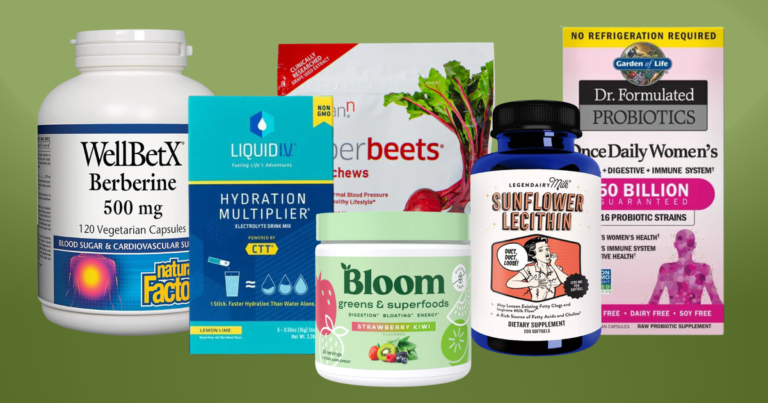The vitamin and supplement industry has seen its share of ups and downs in 2023, but top performers are still leading it to overall growth. Like many areas of health and wellness, vitamins and supplements have been affected by inflation concerns, shifting consumer values, and changing trends, all of which have altered the landscape of the category.
Strong growth in performance nutrition (34.3%) and protein supplements and meal replacements (14.1%) are among the bright spots in the double-digit growth, based on data from SPINS, a company leader in wellness-focused data.
I recently had the pleasure of speaking at Natural Products Expo East’s Supplement Symposium, where I shared some of today’s top supplement trends to watch. Here are some highlights for everyone in the supplement space to watch.
1. Focus on health attracts buyers
Top-performing supplements include Hydration, 49.0%, and Performance, 31.9%, which easily beat the closest producers, Energy Support at 6.3%, and Digestive Health at 3.8 %. This focus on health suggests that buyers are looking for supplements that address issues where they can see clear progress. Staying active remains a growing priority for consumers throughout their lives. The increased focus on shelf life rather than shelf life will continue to attract new consumers of all ages and advance these product types in the years to come.
2. The Fastest Growing Functional Ingredients
Functional ingredients provide health benefits that address specific health concerns, often in addition to a product’s primary purpose. These four functional ingredients are among the fastest growing:
-
Beetroot, with sales growth of 62.8%, supports performance and, more recently, has been touted to support blood pressure.
-
Products DHA, growing 13.5%, and other omega-3s support brain and heart health.
-
Ashwagandha, 6.3% growth, promotes stress relief. Other adaptogenic herbs may have the opportunity to build on ashwagandha’s success. Look for ingredients like rhodiola to see renewed success in the near future.
-
Lactase, 7.8% growth, supports digestion. Beyond probiotics, consumers continue to seek additional support for their gut health.
3. Minerals, probiotics and homeopathy
While most vitamins and minerals saw lower sales than a year ago, the minerals subcategory increased 5.2%. Within homeopathic medicines, growth came from simple homeopathic products, 20.8%, and formulas, 2.6%. With growth of 8.1%, fiber products and laxatives dominated probiotics and digestive aids.
4. Key areas of women’s health
Supplements aimed at women’s health saw an overall decline of 2.1%, but a few key supplements still serve as growth highlights: digestive health, 27.2%; reproductive, 4.5%; urinary tract, 3.8%; and bone health, 3.2%.
Although menopause-related supplements continue to experience a decline in physical commerce, we have seen continued interest in these products online, from Google search interest to an increase in articles written on the subject. Additionally, DTC menopause supplement brands continue to gain traction, which could mean we could see menopause supplement sales change in the near future.
5. Growth of the performance nutrition subcategory
As mentioned above, performance nutrition is seeing strong year-over-year growth at 34.3%. Growth in this category is primarily driven by hydration and electrolytes at 52.2%; pre-workout at 33.7%; intra and post-workout, 28.1%; and creatine, 114.4%. Weight management formulas, meanwhile, saw a slight decline of 1.9%. Performance nutrition appears to retain its crown as the fastest-growing supplement category for a third year in a row. Beyond serious bodybuilders and athletes, everyone is looking for performance enhancements on a daily basis. Creatine continues to have a resurgence as a staple supplement beyond young men looking to get laid. New marketing efforts on this long-studied ingredient are expanding the market to women and people interested in supporting brain health.
6. Hydration and electrolytes extend their reach
Not surprisingly, hydration and electrolyte products often account for the largest share of dollar sales during warmer times of the year, with more consumers exercising outdoors and just trying to beat the heat. However, hydration and electrolytes saw growth greater than 50%, even during some of the colder months. Indeed, in recent years, hydration was no longer marketed exclusively to hardcore athletes, but now accessible to everyone, at any time. It is now considered a product that also appeals to casual athletes, concert-goers, dehydrated travelers and, let’s not forget to mention, party-goers looking for hangover prevention or cures.
7. Pay attention to GutTok
The power of social media, especially TikTok, cannot be overstated when we talk about health trends. This year alone, we’ve already seen berberine, known informally as “nature’s Ozempic,” move from popular TikTok topic to media stories and increased sales. Overall gut health is a popular topic on the influential social media platform. As of 2022, related topics (gut health, Gut Tok, irritable bowel syndrome, and probiotics) have garnered over 7 billion views. Keep an eye on TikTok as more users (average users and health experts) continue to share their thoughts and recommendations on gut health.
